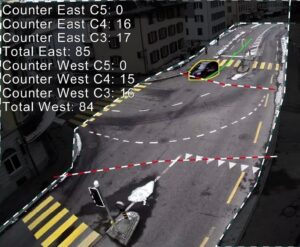Street lighting accounts on average for 40% of a city’s electricity bill: not surprisingly, it is one of the first services city managers focus on when challenged with budget constraints or sustainability targets.
Up to 80% in power consumption and related costs can be saved by turning streetlights to energy-efficient LED lamps and connecting them to a wireless Internet of Things (IoT) network. With our PE Smart Urban Network platform, cities can transform their lighting infrastructure into a smart, sentient network and enable full remote control of single or grouped luminaires.
PE Smart Urban Network allows to turn on/off and dim single or grouped luminaires from the central management system, and enables the definition of customized outdoor lighting schedules. Operating hours and brightness can be programmed upon daily solar times or ambient light levels, and default combinations can be set for given districts or areas.
What’s more? Our platform enables adaptive, sensor-based lighting. By interfacing streetlights with motion sensors or vehicle detection systems, dynamic lighting can be triggered, further reducing consumed power up to 30%. Adaptive lighting patters can be defined, ie. turning lamps on in real time upon vehicle or pedestrian transit, reducing brightness in low-traffic areas or empty roads.
Look at this example: Along a bicycle path, street luminaires can be preset to remain off with daylight and provide light intensity at 40% at night. Thanks to the integrated motion sensor, when the environment light is below the 50 lux threshold and a vehicle is detected, the light level is increased from 40% to 100% for 2 minutes.

Lighting can dynamically mirror traffic intensity. Light points can be integrated with vehicle traffic counters to track the number of cars passing through in a given timeframe. When a specific threshold is overpassed, an automatic command is sent to set a group of lamps on a pre-defined dimming level.
For example, an IP camera can be configured to count vehicles crossing a couple of lines, resetting counters every 15 minutes and sending the related command to dim lights. Three scenarios are considered: with low traffic condition, dimming level is set to a minimum of 40%; medium traffic raises dimming to 50%, and high traffic to 70%.

The dimming control can be also based on Lux, rain and environmental sensors measuring wind intensity, temperature, humidity and pressure. Supposing the physical data to be collected every 5 seconds and correlated with related thresholds, a command is sent to LED drivers over the DALI2 bus to adjust lighting levels.

Want to learn more about PE Smart Urban Network and adaptive lighting? Watch our webinar and feel free to contact our Smart Lighting experts to have all your questions answered!